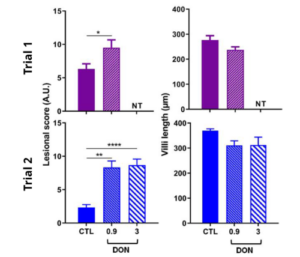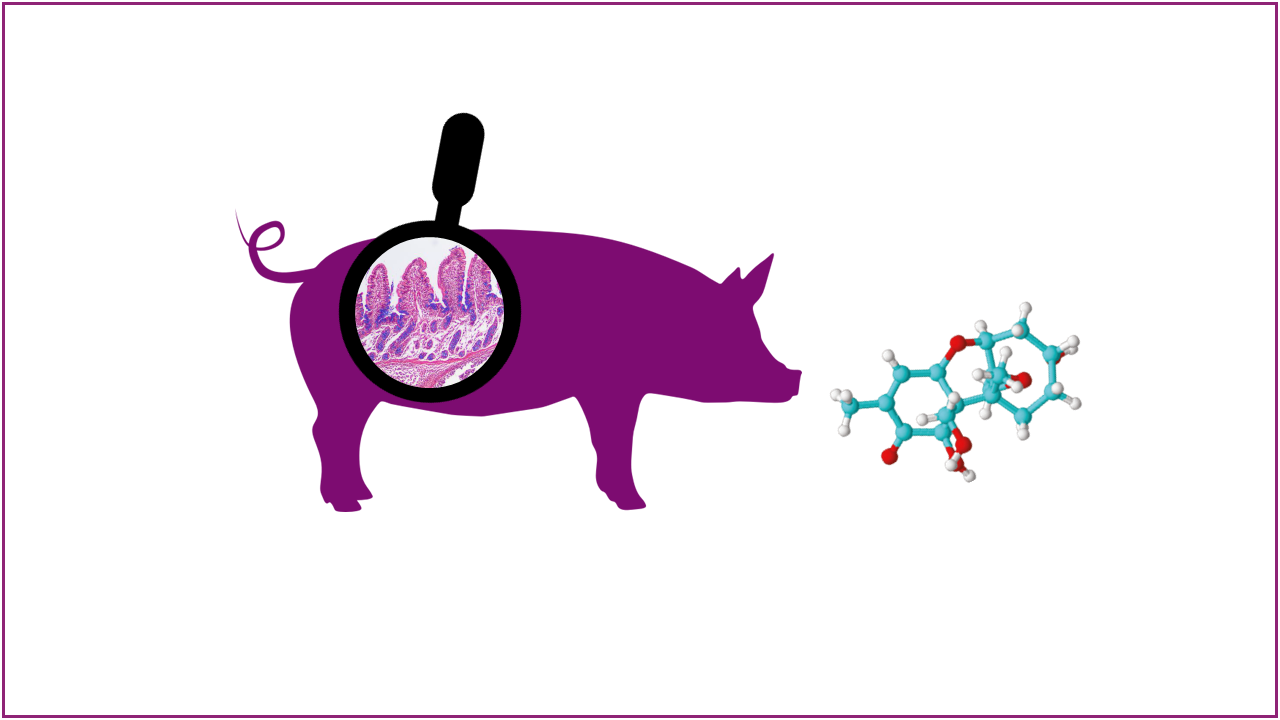January 21, 2024
Reading Time: 2 minutes
Last year (June 2024) we published a Myco’News about the effect of low dose of Deoxinivalenol (DON) on poultry health. Nevertheless, this common mycotoxin produced by several Fusarium species, also can affect swine health at the level (900 ppb) recommended by EFSA.
The authors of this research work done in France observed lesions in the small intestine in the animals exposed to DON. The main histological changes observed in animals treated with DON were villi atrophy and fusion, with flattening of enterocytes (Fig. 1). At the molecular level, a trend of decreased expression of cytokines and genes implicated in the immune response (IL-1β, IL-1α, IFN-γ, TGF-β1) was observed in animals receiving feed contaminated with 0.9 ppm of DON compared to the control animals.
DON exposure also affected pigs ‘liver. Ingestion of DON caused disorganization, cytoplasmic vacuolization and megalocytosis of hepatocytes. A significant decrease in the gene expression of ABCA1, implicated in the cholesterol transport, was seen in the 0.9 ppm DON group. The other genes implicated in the immune response (IL-1α) and in satiety (CCK) show a trend of decreased expression in the low-DON group. In contrast, genes implicated in oxidative stress (SOD1, SOD2) show a trend of increased expression.
In conclusion, the findings of this study indicate that the EU regulatory level of 0.9 mg DON/kg feed induces lesions in the intestine and liver, and the modulation of the inflammatory response. This suggests that the current recommended level should be reconsidered in order to ensure the optimal health and well-being of pigs.

Figure 1. Intestinal morphology of pigs in the control (CTL) group, 0.9 and 3 ppm DON groups. In purple the results of trial 1 and in blue the trial 2.
Reference: Pierron A., Balbo L.C., Soler, L., Pinton P., Puel S., Laffitte J., Albin M., Loureiro Bracarense AP., Rodriguez M and Oswald I. 2024. Deoxynivalenol Induces Local Inflammation and Lesions in Tissues at Doses Recommended by the EU. International Journal of Molecular Sciences, 25, 9790. https://doi.org/10.3390/ijms25189790


